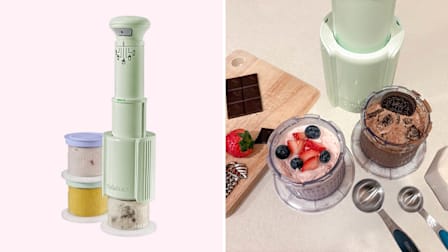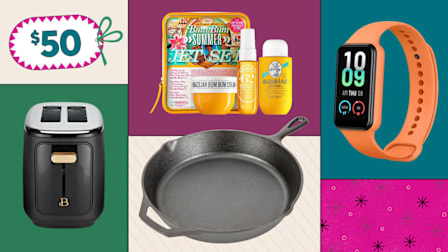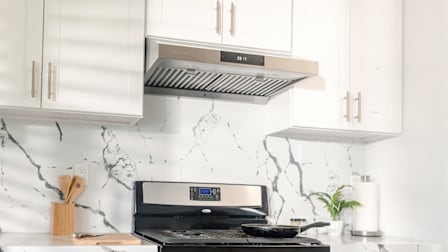Common Kitchen Appliance Mishaps and How to Fix Them
Some mistakes can lead to expensive repairs. Our advice will help keep your small and large appliances running smoothly.
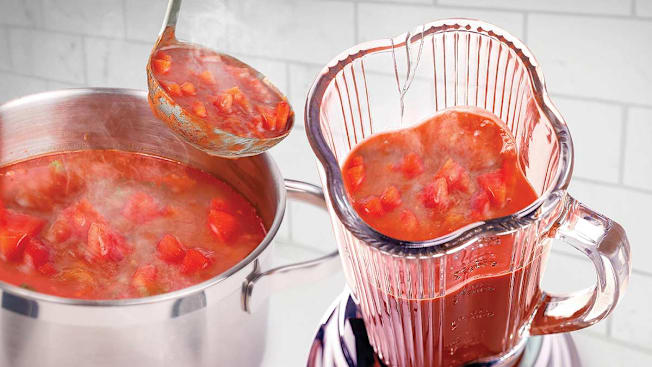
Oops! You scratched your cooktop, broke a fridge shelf, or clogged your dishwasher. As hardworking as those appliances are, it can be surprisingly easy to damage them by something as simple as using the wrong cleaning products—and pretty expensive to repair.
Use our expert advice to avoid the following common mistakes and keep your equipment working well for as long as possible.
Range, Oven, Cooktop
Mistake: You’re using the wrong cookware or cleanser on your glass cooktop. Smooth cooktops are simple to use and keep clean, but they’re also easy to scratch and chip. And it’s not just an aesthetic issue: Deep chips and cracks can make the appliance unsafe to cook on and cost $50 to $150 to fix—or up to $800 to replace the surface, according to the home-improvement site Angi. To avoid that expense, don’t use cookware with an uneven or textured bottom, such as cast iron—its heavy edges can scratch and gouge. Opt instead for smoother stainless steel or heavy aluminum cookware. Can’t live without your cast iron? Lift and place it carefully—never drag it.
For cleaning, avoid harsh or gritty cleansers and tools. While the stovetop is still slightly warm, remove any stuck food debris with a cooktop scraper (such as Cerama Bryte’s) held at no more than a 45-degree angle, says Emily Spaeter, a Whirlpool kitchen brand manager. Next, use the manufacturer’s recommended cooktop cleaner and buff the surface with a soft, dry cloth to remove any white film. Also, don’t use a sopping wet cloth near knobs. If water gets into the electrical parts, it can cause the appliance to fail.
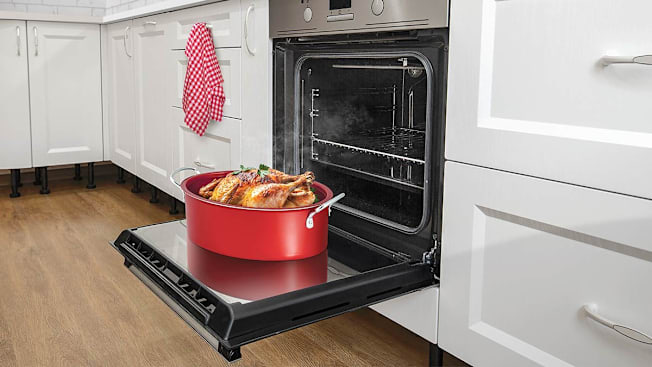
Photo Illustration: Eric Heintz Photo Illustration: Eric Heintz
Refrigerator
Mistake: You’re scrubbing the gasket too hard. The flexible strip that prevents cold air from escaping and warm air from seeping inside your refrigerator can get pretty gunky. But going after it with a gritty cleanser and/or an abrasive pad can damage the rubber or cause it to deteriorate. Replacing the gasket could cost $100 to $300, according to HomeGuide, a repair-pro locator site.
Instead, clean it gently, using a soft microfiber cloth and a solution of a quarter-teaspoon of mild dish soap in a cup of warm water or a tablespoon of baking soda in a quart of warm water. Use cotton swabs to clean inside creases, then wipe with a damp cloth.
Mistake: You never, ever clean the refrigerator coils. Join the club: Few of us do. Check your manual; if your model requires cleaning, the experts we spoke to advise doing it twice a year. Condenser coils (at the base, back, or top of the fridge) help dissipate heat so that the refrigerant (coolant) can stay chilled. When dirt and dust accumulate, the appliance has to work harder, possibly shortening its life. Twice annually, when you reset your clocks, “clean the coils to keep your refrigerator from burning out,” Detwiler says. Use a vacuum or a long-handled brush.
Mistake: You’re using steel wool on your stainless steel refrigerator. It’s tempting to reach for a heavy-duty tool to degrime your kitchen, but for stainless steel surfaces, using steel wool can leave behind surface-dulling visible scratches and lead to rust. You can’t always repair that damage. Gentle buffing with a baking soda paste (always with the grain) might make light scratches on stainless steel appliances less noticeable, says Marla Mock, president of Molly Maid, a national residential cleaning service. But for deep scratches, you’ll need a repair pro or a replacement panel for your fridge, which can cost hundreds.
Mistake: You put hot dishes straight into the refrigerator. Food experts say you should place leftovers in the fridge quickly, before bacteria can start to breed. But setting a piping pan of baked ziti on a glass shelf can cause thermal shock due to the temperature difference, says Breann Chai, who oversees refrigerator testing at CR. The shelf could shatter, creating an unsafe mess and requiring a new shelf ($20 to $100-plus). Less risky: Transfer food into smaller containers to cool on the counter (for no more than 2 hours, per the Food and Drug Administration), then refrigerate.
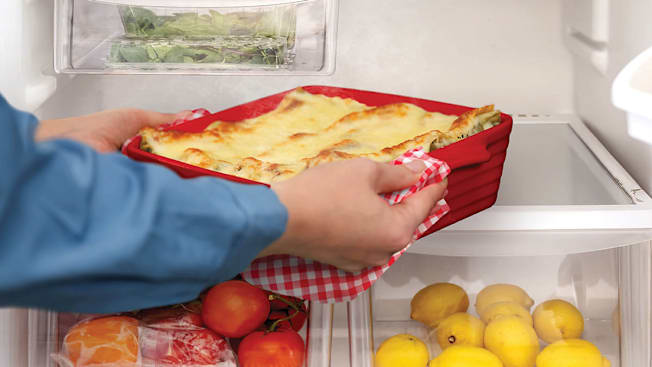
Photo Illustration: Eric Heintz Photo Illustration: Eric Heintz
Dishwasher
Mistake: You don’t remove paper labels from containers before washing. It’s generally fine to wash and reuse the containers that food comes in. But scrape off the paper label before putting the item in the dishwasher, or it’s likely to come off during the cycle. While the filter should catch most of the bits (more on that ahead), some may end up clogging the machine’s inner workings. Also, never put a lightweight plastic container on the bottom rack; place it securely between tines facing downward on the top rack. If an item is small enough to slip through the top rack, hand-wash it instead. The appliance’s high heat, especially if there’s an exposed heating element, can melt the plastic, which will adhere to the interior. If you can peel it off once everything’s cool, bravo. Otherwise, a service call, typically costing $150 to $250 to replace a heating element, or a new appliance could be in your future.
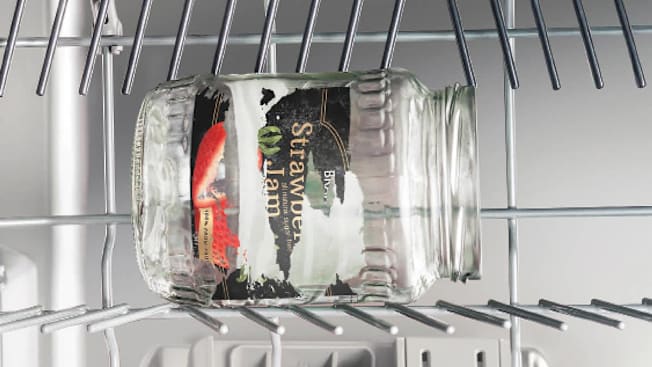
Photo Illustration: Eric Heintz Photo Illustration: Eric Heintz
Mistake: You empty the filter only when you smell something funky. The trouble is, an overloaded filter won’t necessarily stink, but it can cause major problems. Bits of food or paper can clog it so that water can’t drain, leading to a flooded appliance or the entire unit shutting down because water can’t be pumped to the spray arms. A professional repair could cost $90 to $175, HomeGuide says. To avoid that headache, pop the filter out and wash it at least monthly. Check the manufacturer’s instructions, but usually warm water and a brush or sponge will suffice, says April Taylor, an associate brand manager at Whirlpool. (Older models may have self-cleaning filters, which don’t require this care.)
Mistake: You clean your dishwasher with vinegar. This popular cleaning hack sounds simple: Put a bowl of white vinegar in your dishwasher and run an empty cycle. But then you have to run another empty cycle with cold water and a cup of baking soda sprinkled on the bottom of the machine to neutralize the acid, says Larry Ciufo, who oversees dishwasher testing at CR. Otherwise, vinegar alone can damage and wear out the tubing and motor. A replacement can cost $350 to $500, HomeGuide says. Use a product like Affresh Dishwasher Cleaner or the manufacturer-recommended brand instead.
Garbage Disposal
Mistake: You think it’s fine to grind up potato peels. Think again. The starch in those spuds can create a viscous, gluey clog in your disposal. You can try dissolving it with this home remedy: Turn off the power to the unit, pour in a half-cup of baking soda and a half-cup of white vinegar, cover the drain, and wait a few minutes. Meanwhile, heat a kettle of water to boiling and then flush out the disposal with the boiling water. No luck? You’ll have to call in a pro to clear away the mess, which is likely to set you back $241, on average, according to Angi.
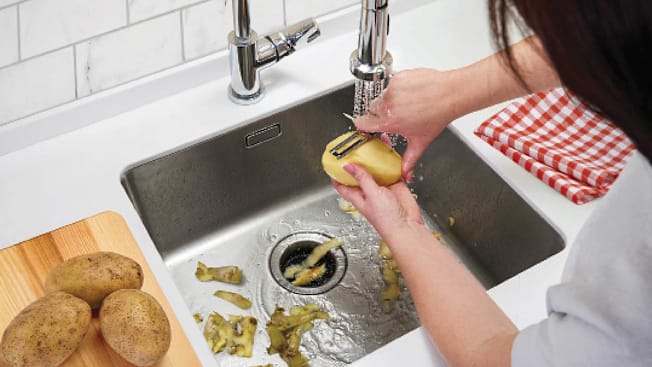
Photo Illustration: Eric Heintz Photo Illustration: Eric Heintz
Small Appliances
Mistake: You put hot liquid in your blender. You may want to purée the chunky soup you just made, but hot liquids—say, 200° F—shouldn’t go in your blender (check the manual). You risk cracking the glass or warping the plastic container (often over $100 to replace). It’s also unsafe. Escaping steam or a spray of hot liquid can cause scalding or burns.
Mistake: You’re ignoring the grease filter under the microwave. If you have an over-the-range microwave, the filter is likely on the underside. It’s where grease collects whenever the range fan runs while you’re cooking, and it could catch fire and ruin your microwave. Once a month, pop out the filter, soak it in hot water and dish soap for at least 10 minutes, rinse, and dry. If it’s very greasy, add ¼ cup of baking soda to the hot water.
Mistake: You never remove the mineral buildup in your coffee maker. Mineral deposits inside the tank and along the tubing can give your coffee a bitter taste, damage the machine’s seals, and cause backups and leaks. Some models have an indicator light that alerts you when it’s time to descale. Or you might see white residue inside the appliance. Check the manual for tips. A possible remedy: Run a cycle of equal parts white vinegar and water, then two cycles of plain water, through your coffee maker, Mock says.
Mistake: You’re using abrasive cleansers inside your countertop cooker. Gritty cleansers and harsh tools can scratch a countertop cooker’s interior nonstick surface, making food more likely to stick and compromising the coatings. To avoid this, clean with a sponge, cloth, or soft brush, plus grease-dissolving dish soap and water. Soak pans and racks in that solution if grime is baked on.
Mistake: You store stuff on top of your toaster oven. That habit could cause a fire or, if the stuff is plastic, a melted mess. In that case, turn off the toaster oven, Mock says. While the plastic is still hot and pliable, scrape it off with a silicone spatula (to prevent scratches) and scrub with a damp paper towel. Let the toaster oven cool. Next, soak a microfiber cloth in white vinegar and scrub to remove larger pieces. Generously sprinkle the area with baking soda and cover with an old towel dampened in hot water for 15 minutes to loosen stuck pieces, then rub off the baking soda. Shine the surface with a damp microfiber cloth.
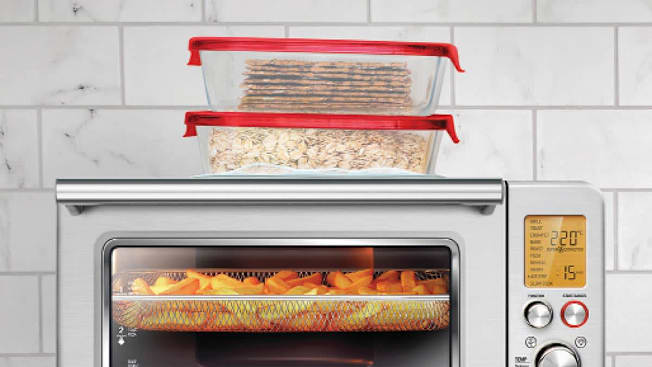
Photo Illustration: Eric Heintz Photo Illustration: Eric Heintz
A Safer Cleaning Toolkit
Now that you know what can lead to face-palm moments and pricey repairs, equip yourself to maintain your appliances without harming them.
General Use
Dish soap: Dawn Ultra Original Dish Soap
Stainless steel appliance cleaner: Cerama Bryte Stainless Steel Appliance Cleaner, from $8 at Cerama Bryte, Target, and Walmart
White vinegar and/or lemon juice
Baking soda
Microfiber cloths
Cotton swabs
Small Appliances
Plastic or silicone spatula
Refrigerators
Long-handled brush or vacuum
Dishwashers
Dishwasher cleaner: Affresh Dishwasher Cleaner, $8.47 at Amazon
Ranges/Ovens/Cooktops
Glass cooktop scraper: Cerama Bryte Scraper + Pad Combo, from $6 at Cerama Bryte and Walmart
Cooktop cleaner: Weiman Cooktop Cream, $9.98 at Lowe’s
Replacement rubber gasket or foam tape: Check with your cooktop manufacturer
Oven door glass cleaner: Bar Keepers Friend Soft Cleanser, from $2.72 at Amazon and Walmart
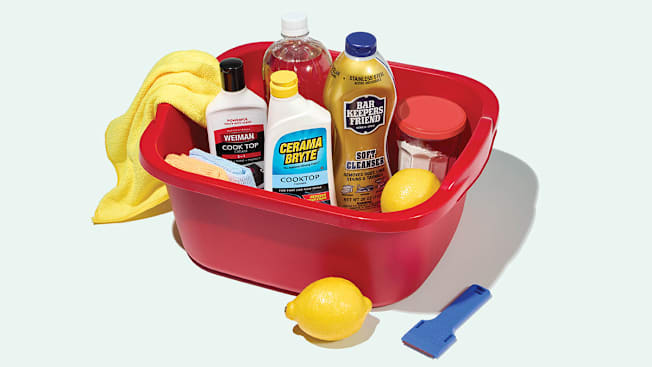
Photo: Ben Goldstein Photo: Ben Goldstein
Editor’s Note: This article also appeared in the November/December 2025 issue of Consumer Reports magazine.

















